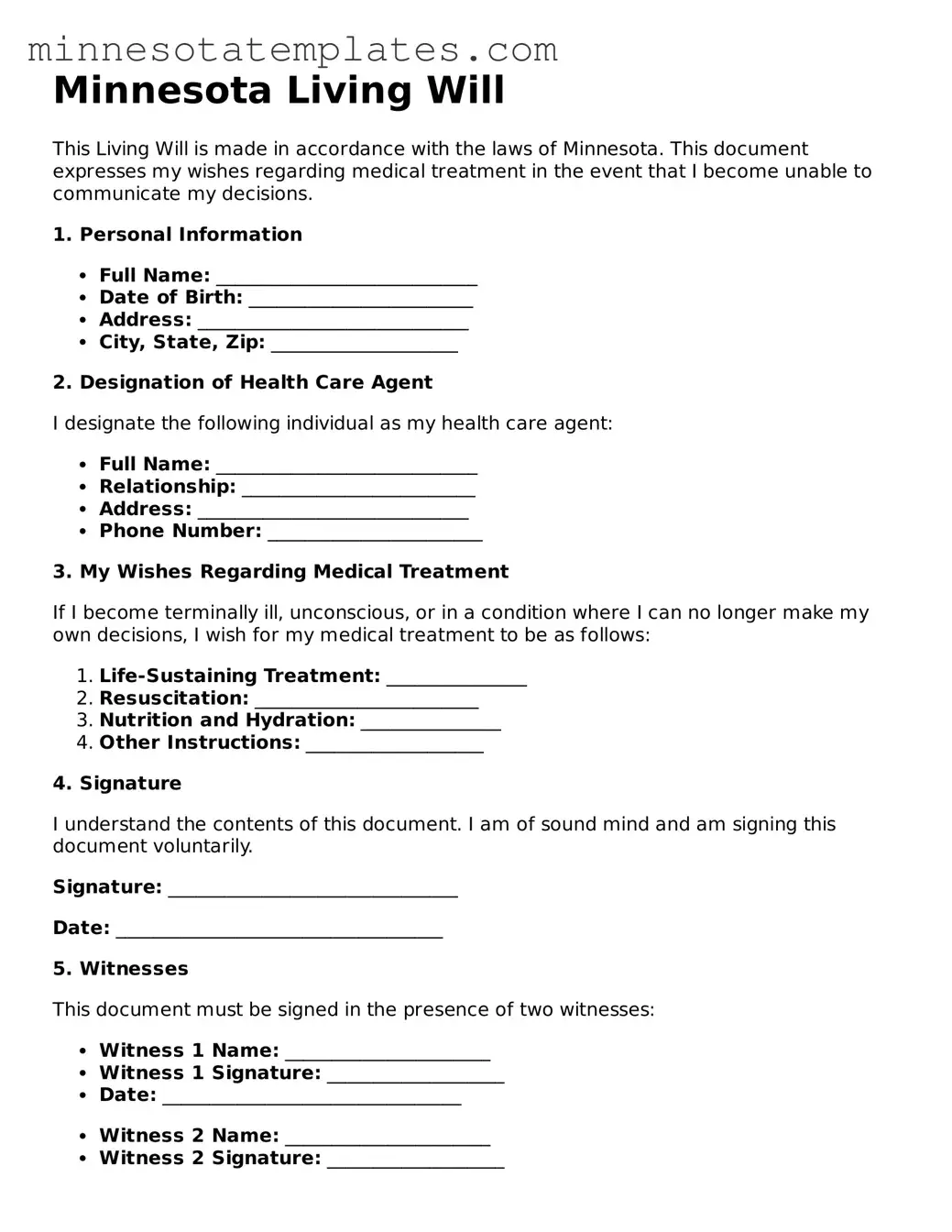Valid Living Will Form for the State of Minnesota
A Minnesota Living Will form is a legal document that allows individuals to express their wishes regarding medical treatment in the event they become unable to communicate. This form ensures that healthcare providers and loved ones understand a person's preferences for end-of-life care. To take control of your healthcare decisions, consider filling out the form by clicking the button below.
Access Your Form Now
